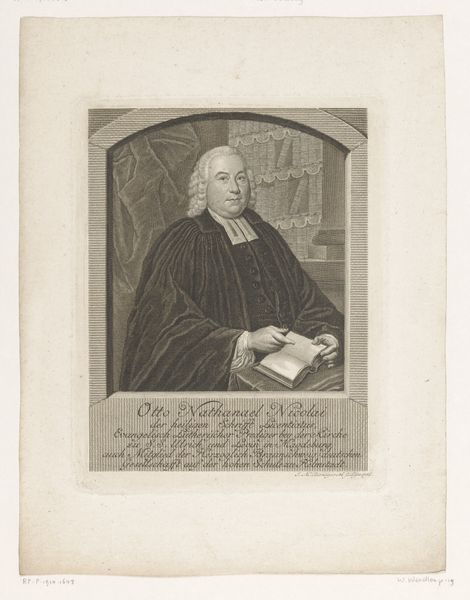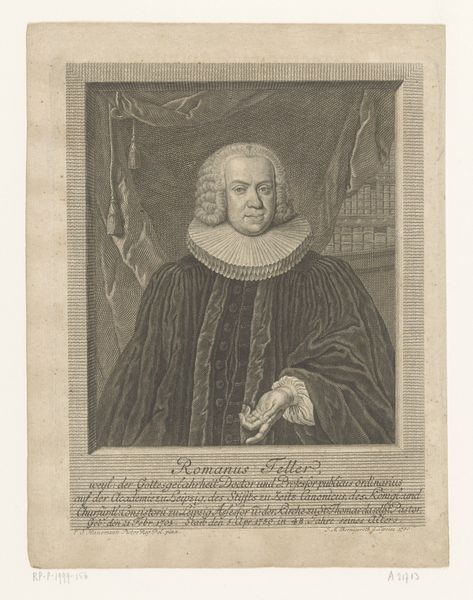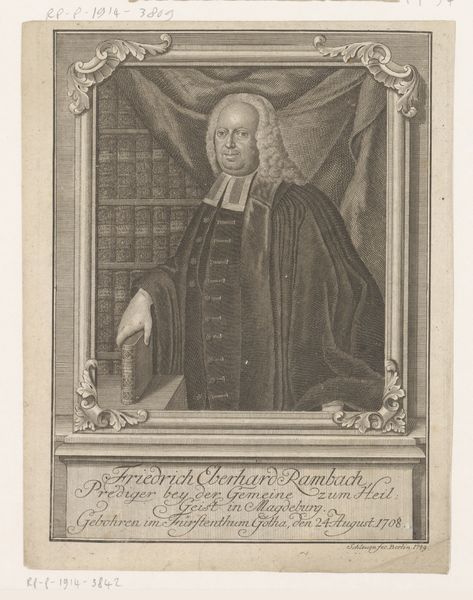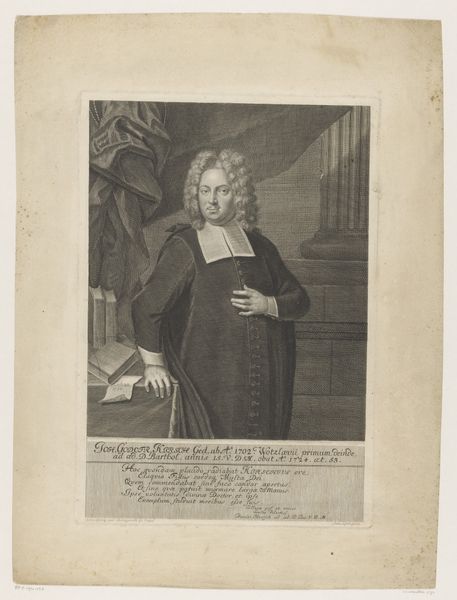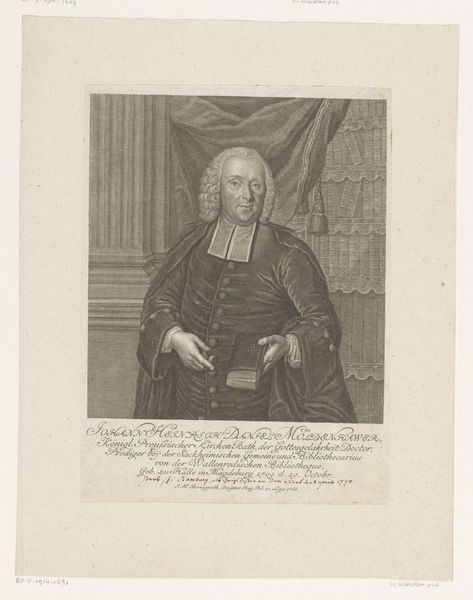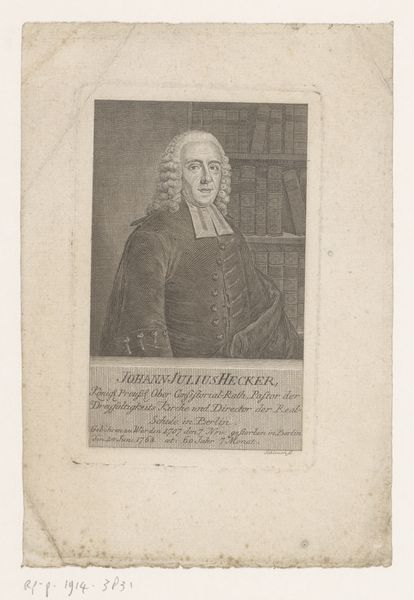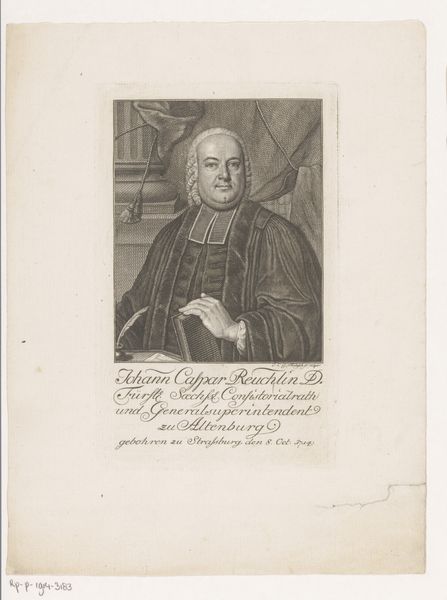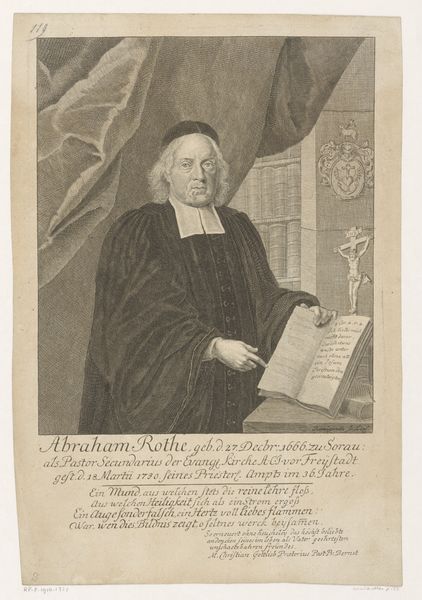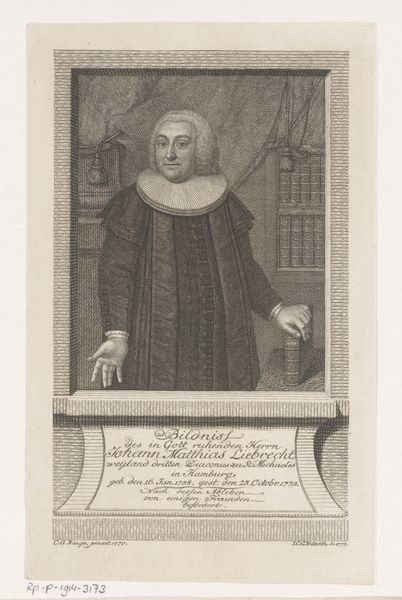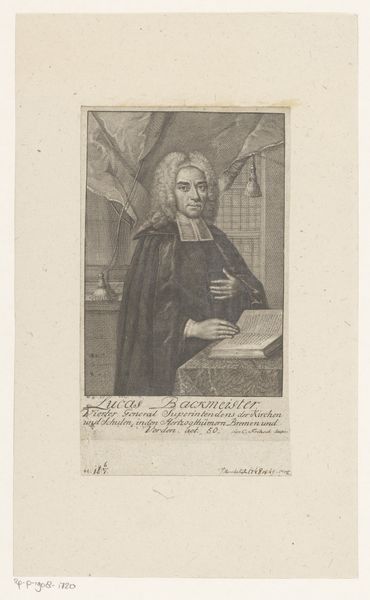
print, engraving
#
portrait
#
neoclacissism
# print
#
history-painting
#
academic-art
#
engraving
Dimensions: height 200 mm, width 154 mm
Copyright: Rijks Museum: Open Domain
Curator: Here we have Georg Christoph Schmidt's "Portret van Johann Friedrich Hirt," an engraving completed in 1775. What strikes you upon first viewing this portrait? Editor: Its imposing quality, I suppose. Despite being a print, there’s a gravity to the figure, amplified by the monochrome palette and the surrounding composition, and almost daring, his gaze directs right towards the observer. Curator: Precisely. Schmidt’s utilization of the engraving medium contributes to this impression. Note how the precise lines delineate Hirt's form and costume, from the meticulous hatching creating shadow on his robe to the sharp edges of the book he holds. Editor: Right, and contextually, engraving was used often to disseminate knowledge, this becomes especially visible when noting how "academic" the portrait really is with Hirt positioned inside the academe next to his book. Was it an active decision from Schmidt or did it only follow tradition? Curator: Perhaps it followed tradition to some extent; prints enabled wider circulation of imagery. Yet the level of detail suggests intention. Notice how Hirt is positioned before a bookshelf partly obscured by what appears to be an heavy curtain, all contributing to the image’s symbolic depth. Editor: A depth intended, surely, for a particular audience. These commissioned portraits cemented social standing, creating a public persona shaped by institution and perceived legacy rather than reflecting any “inner self.” The text adds, let me see… naming him "Elect Superint. General", can you share any more on how prints affected people back then? Curator: During the Neoclassical movement, portraiture started reflecting civic virtues. In that historical context, print media democratized information, making it possible to immortalize subjects of knowledge such as Hirt, especially within academic circles. Schmidt's artistic decision really encapsulates those specific beliefs and sentiments. Editor: It makes me wonder how figures of authority are portrayed in today's world; from leaders to scholars, the power of imagery and its diffusion are more relevant now than ever before, with very important effects to political polarization. Curator: Indeed, a lasting reflection spurred from a carefully crafted, historic print. The art object, and its place in history. Editor: Art, history, and the stories images tell about ourselves. Thanks for shedding light on these enduring qualities!
Comments
No comments
Be the first to comment and join the conversation on the ultimate creative platform.
